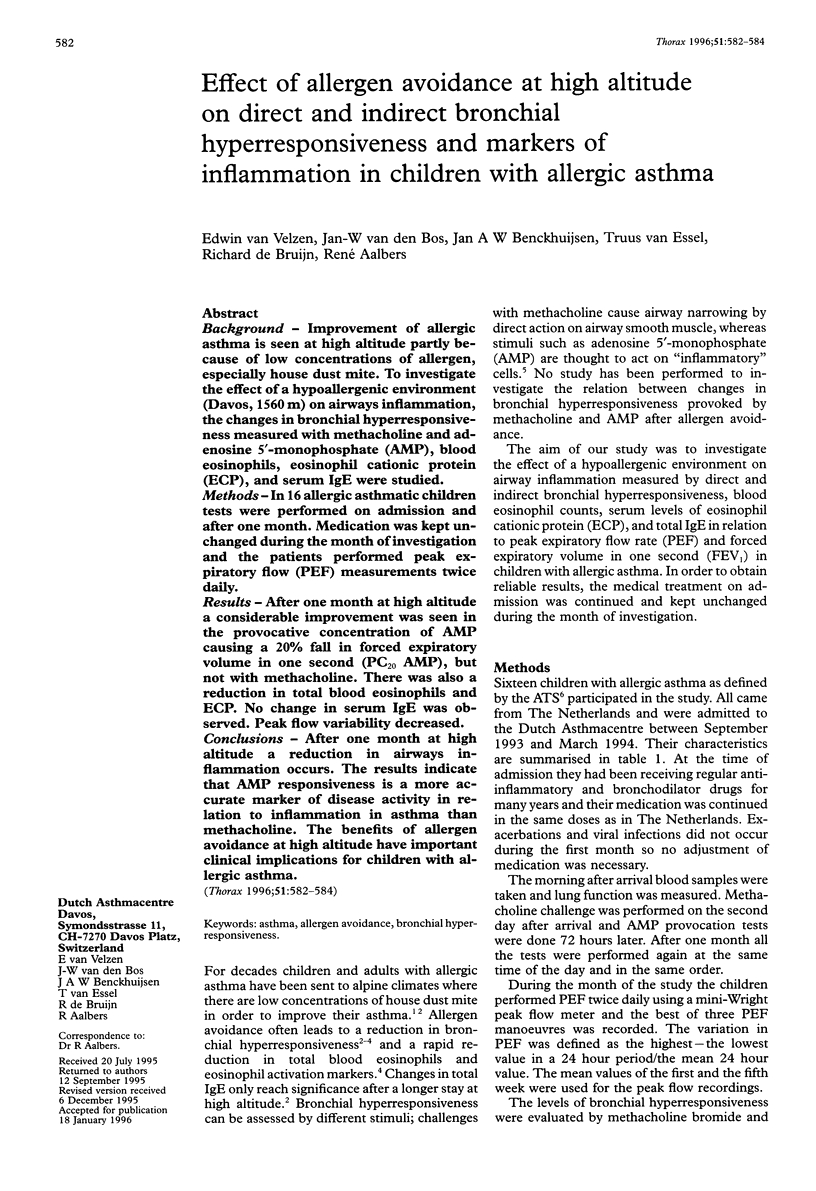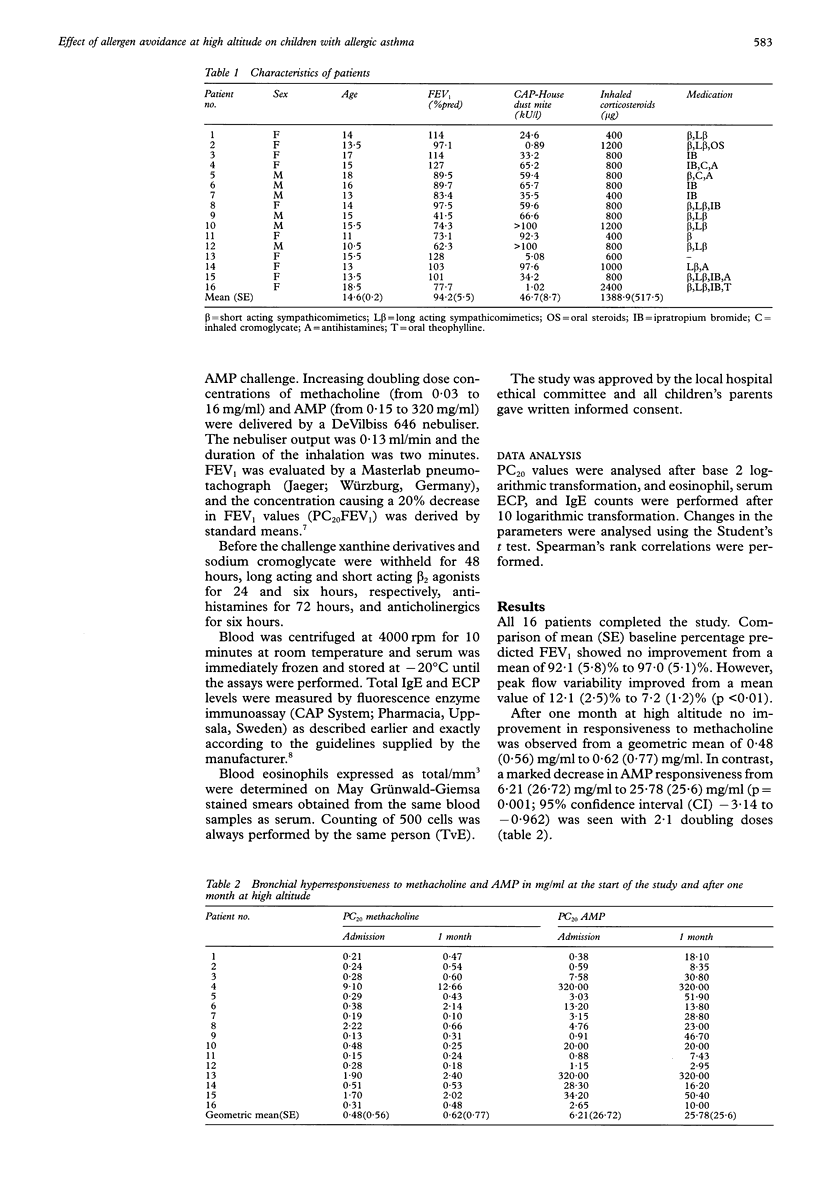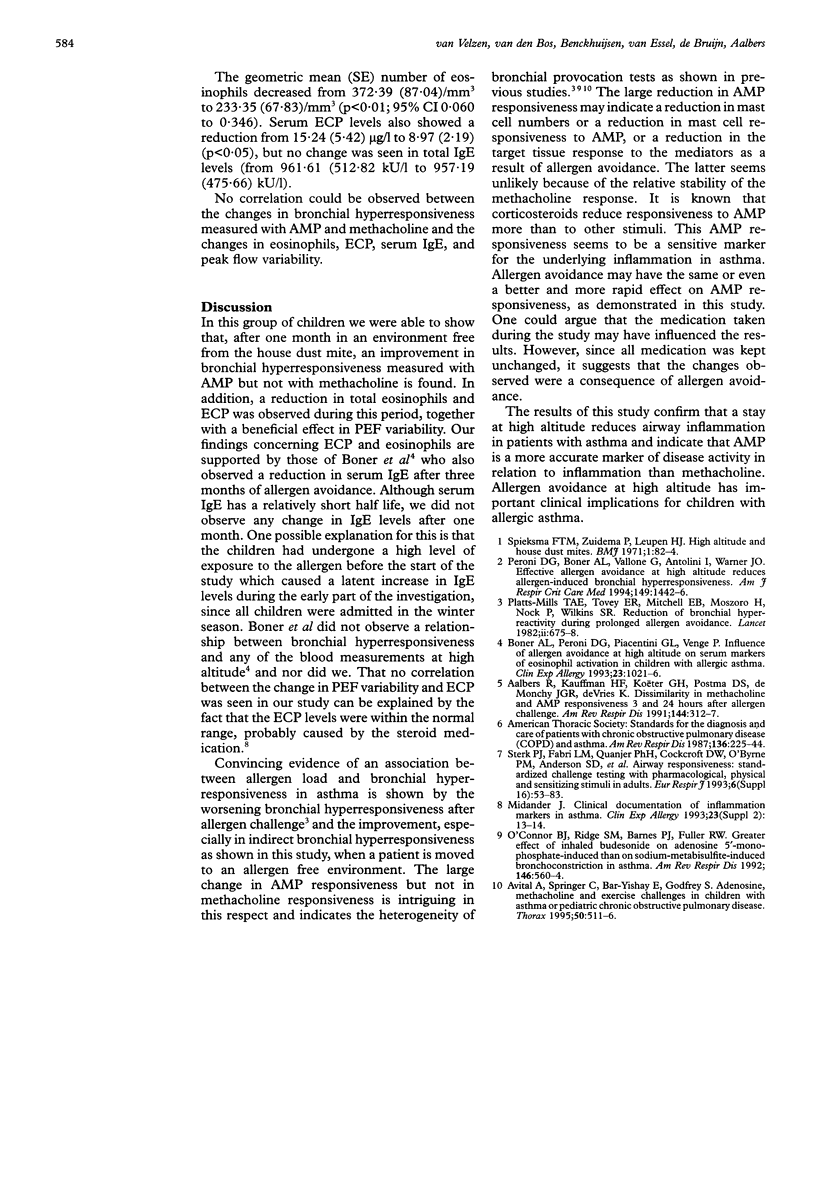Abstract
BACKGROUND: Improvement of allergic asthma is seen at high altitude partly because of low concentrations of allergen, especially house dust mite. To investigate the effect of a hypoallergenic environment (Davos, 1560 m) on airways inflammation, the changes in bronchial hyperresponsiveness measured with methacholine and adenosine 5'-monophosphate (AMP), blood eosinophils, eosinophil cationic protein (ECP), and serum IgE were studied. METHODS: In 16 allergic asthmatic children tests were performed on admission and after one month. Medication was kept unchanged during the month of investigation and the patients performed peak expiratory flow (PEF) measurements twice daily. RESULTS: After one month at high altitude a considerable improvement was seen in the provocative concentration of AMP causing a 20% fall in forced expiratory volume in one second (PC20 AMP), but not with methacholine. There was also a reduction in total blood eosinophils and ECP. No change in serum IgE was observed. Peak flow variability decreased. CONCLUSIONS: After one month at high altitude a reduction in airways inflammation occurs. The results indicate that AMP responsiveness is a more accurate marker of disease activity in relation to inflammation in asthma than methacholine. The benefits of allergen avoidance at high altitude have important clinical implications for children with allergic asthma.
Full text
PDF


Selected References
These references are in PubMed. This may not be the complete list of references from this article.
- Avital A., Springer C., Bar-Yishay E., Godfrey S. Adenosine, methacholine, and exercise challenges in children with asthma or paediatric chronic obstructive pulmonary disease. Thorax. 1995 May;50(5):511–516. doi: 10.1136/thx.50.5.511. [DOI] [PMC free article] [PubMed] [Google Scholar]
- Boner A. L., Peroni D. G., Piacentini G. L., Venge P. Influence of allergen avoidance at high altitude on serum markers of eosinophil activation in children with allergic asthma. Clin Exp Allergy. 1993 Dec;23(12):1021–1026. doi: 10.1111/j.1365-2222.1993.tb00294.x. [DOI] [PubMed] [Google Scholar]
- Midander J. Clinical documentation of inflammation markers in asthma. Clin Exp Allergy. 1993 Jun;23 (Suppl 2):13-4, discussion 15-22. doi: 10.1111/j.1365-2222.1993.tb00374.x. [DOI] [PubMed] [Google Scholar]
- O'Connor B. J., Ridge S. M., Barnes P. J., Fuller R. W. Greater effect of inhaled budesonide on adenosine 5'-monophosphate-induced than on sodium-metabisulfite-induced bronchoconstriction in asthma. Am Rev Respir Dis. 1992 Sep;146(3):560–564. doi: 10.1164/ajrccm/146.3.560. [DOI] [PubMed] [Google Scholar]
- Peroni D. G., Boner A. L., Vallone G., Antolini I., Warner J. O. Effective allergen avoidance at high altitude reduces allergen-induced bronchial hyperresponsiveness. Am J Respir Crit Care Med. 1994 Jun;149(6):1442–1446. doi: 10.1164/ajrccm.149.6.8004296. [DOI] [PubMed] [Google Scholar]
- Platts-Mills T. A., Tovey E. R., Mitchell E. B., Moszoro H., Nock P., Wilkins S. R. Reduction of bronchial hyperreactivity during prolonged allergen avoidance. Lancet. 1982 Sep 25;2(8300):675–678. doi: 10.1016/s0140-6736(82)90709-7. [DOI] [PubMed] [Google Scholar]
- Sterk P. J., Fabbri L. M., Quanjer P. H., Cockcroft D. W., O'Byrne P. M., Anderson S. D., Juniper E. F., Malo J. L. Airway responsiveness. Standardized challenge testing with pharmacological, physical and sensitizing stimuli in adults. Report Working Party Standardization of Lung Function Tests, European Community for Steel and Coal. Official Statement of the European Respiratory Society. Eur Respir J Suppl. 1993 Mar;16:53–83. [PubMed] [Google Scholar]
- Torres A., Serra-Batlles J., Ferrer A., Jiménez P., Celis R., Cobo E., Rodriguez-Roisin R. Severe community-acquired pneumonia. Epidemiology and prognostic factors. Am Rev Respir Dis. 1991 Aug;144(2):312–318. doi: 10.1164/ajrccm/144.2.312. [DOI] [PubMed] [Google Scholar]


